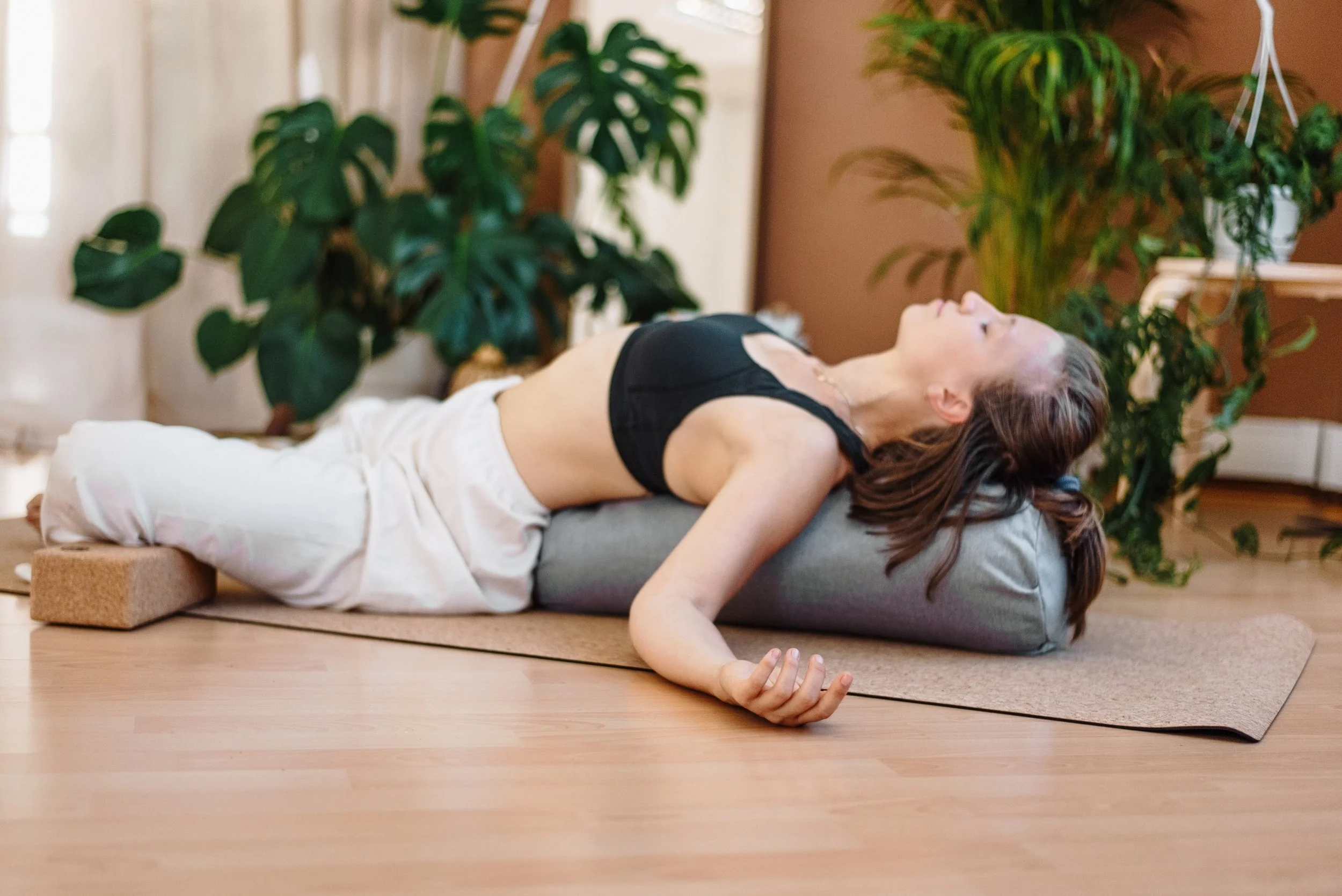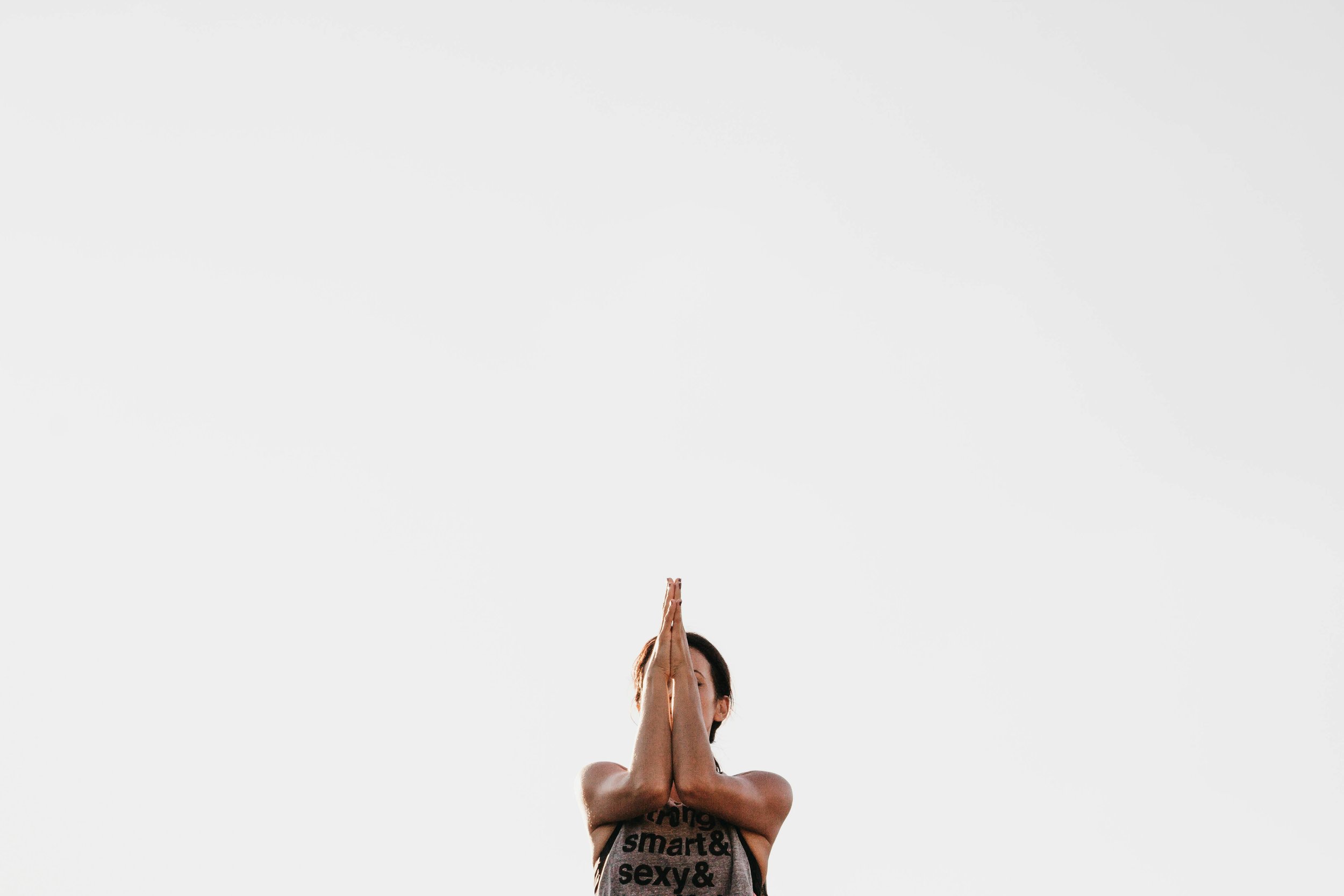
Yin Yoga and TCM: Summer season- meridians and postures
In Yin Yoga, summer's association with the Fire element and its related Heart and Small Intestine meridians can be addressed through poses that open the chest and heart and promote grounding, such as Thread the Needle, Twisted Child’s Pose, Open and Closed Heart, Banana or Crescent Moon pose and Melting Heart. These poses, when held for extended durations can help with improving digestion and calming the fire of the heart.

Yoga and shadow work
The deeper we go into all the layers of a Yoga journey, the more we are bound to be confronted with both our light and shadow aspects of ourselves, a true rollercoaster of inner experiences. Like the relation between Yin and Yang, light and shadow, day and night, so our relation to life and Yoga can change or incorporate a duality, between idealization and disillusionment.

Trauma-informed Yoga in today's world
Yoga can support trauma healing by helping students reconnect with their bodies through asana, breathwork and meditation. If people start to become more attuned to their inner sensations, they could build more tolerance for physical experiences and develop healthier responses.

Exploring Savasana
Savasana, meant to represent a surrendering and grounding practice, incorporated in all styles of Yoga, is considered by many as the hardest pose, although it implies total stillness and it looks easy from the outside. That is because relaxation is not something that appears on demand, it is something that can or may not happen. Often, the 5-10 minutes of Savasana in the end of the class are meant to be as a conclusion of the class, as if the purpose of all the postures would be to prepare the body to be able to sit still and rest and in the end, to be able to meditate beyond any physical sensation or discomfort.

Making Yoga classes that are inclusive and why this is important
In my belief, Yoga classes should be designed in a sustainable way, with full awareness, in order to accommodate a diverse range of bodies and levels. How can we teach and show that diversity fosters inclusion and therefore the idea that differences are acceptable and even necessary?

Best time for your Yoga routine
What is the best time for your Yoga practice? Is it worth building your Yoga practice routine around the time you are having most of your energy? How effective is having a Yoga routine or schedule?

Yin Yoga and TCM: Winter season- meridians and postures
In TCM, the state of nature reflects what quality our everyday life should have in order to be in harmony with the energies. Winter is therefore the perfect time for introspection and introversion, time to ask the right questions and find the real answers. Time to breathe more and create more space in our minds and hearts. It is a time for slower, gentler practices, where one can really go within.

Yoga and Gratitude
Gratitude is more than saying thank you out loud; gratitude is a way of seeing life, leading us to be more mindful about our thoughts, actions and speech, in order to attract more positive occurrences, people and situations, aligned with our values. Being thankful exists in the mind but gratitude comes from the heart.

About Integrity
Integrity is essential to all practitioners of Yoga because it creates a foundation of deep honesty upon which a practice can best be built. Moreover, integrity is fully expressed in the relation with oneself, in the way we honor commitments to ourselves, take time to be considerate of our actions, and represent our practice also outside the Yoga class.

Tension vs Compression in YOGA
Yoga is teaching us to practice ahimsa (non-violence) in our practice, to meet tension with kindness, respect the capacity of our bones, and help find our own intention (optimal health) and personal alignment by shaping the poses into our bodies and not the other way round.
Subscribe to my newsletter